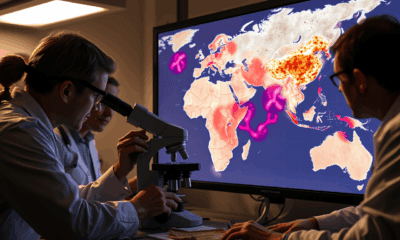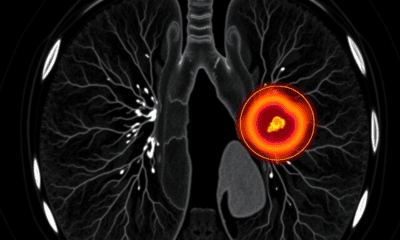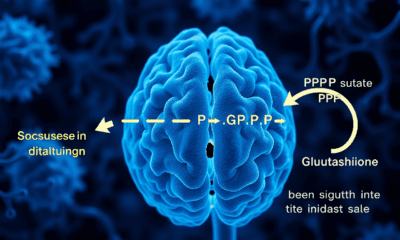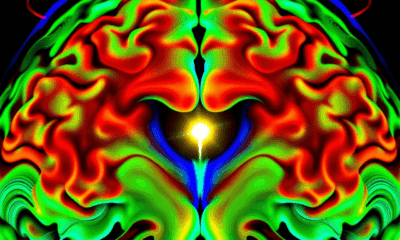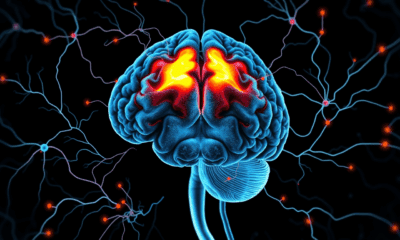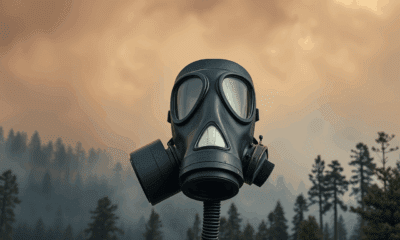While we try to keep things accurate, this content is part of an ongoing experiment and may not always be reliable.
Please double-check important details — we’re not responsible for how the information is used.
Air Quality
Early-Life Exposure to Air and Light Pollution Linked to Increased Risk of Pediatric Thyroid Cancer
A new study suggests that early-life exposure to two widespread environmental pollutants — small particle air pollution and outdoor artificial light at night — could increase the risk of pediatric thyroid cancer. The study found a ‘significant association’ between exposure to ambient fine particulate matter air pollution (PM2.5) and outdoor artificial light at night (O-ALAN) and increased risk of papillary thyroid cancer in children and young adults up to 19 years old. The exposures occurred during the perinatal stage of life, typically defined as the time from when pregnancy occurs up to a year after birth.

Air Quality
Flash Floods on the Rise: How Climate Change Supercharges Summer Storms in the Alps
Fierce, fast summer rainstorms are on the rise in the Alps, and a 2 C temperature increase could double their frequency. A new study from researchers at the University of Lausanne and the University of Padova used data from nearly 300 Alpine weather stations to model this unsettling future.
Air Pollution
Toxic Twin Found: MCCPs Spotted in U.S. Air for First Time
In a surprising twist during an air quality study in Oklahoma, researchers detected MCCPs an industrial pollutant never before measured in the Western Hemisphere’s atmosphere. The team suspects these toxic compounds are entering the air through biosolid fertilizers derived from sewage sludge. While these pollutants are not yet regulated like their SCCP cousins, their similarity to dangerous “forever chemicals” and unexpected presence raise red flags about how chemical substitutions and waste disposal may be silently contaminating rural air.
Air Quality
Rivers Hold a Surprising Secret: Ancient Carbon Leaks into the Atmosphere
Ancient carbon thought to be safely stored underground for millennia is unexpectedly resurfacing literally. A sweeping international study has found that over half of the carbon gases released by rivers come from long-term, old carbon sources like deep soils and weathered rocks, not just recent organic matter. This surprising discovery suggests Earth s vegetation is playing an even bigger role in absorbing excess carbon to keep the climate in check.
-

 Detectors3 months ago
Detectors3 months agoA New Horizon for Vision: How Gold Nanoparticles May Restore People’s Sight
-

 Earth & Climate4 months ago
Earth & Climate4 months agoRetiring Abroad Can Be Lonely Business
-

 Cancer3 months ago
Cancer3 months agoRevolutionizing Quantum Communication: Direct Connections Between Multiple Processors
-

 Agriculture and Food3 months ago
Agriculture and Food3 months ago“A Sustainable Solution: Researchers Create Hybrid Cheese with 25% Pea Protein”
-

 Diseases and Conditions4 months ago
Diseases and Conditions4 months agoReducing Falls Among Elderly Women with Polypharmacy through Exercise Intervention
-

 Chemistry3 months ago
Chemistry3 months ago“Unveiling Hidden Patterns: A New Twist on Interference Phenomena”
-

 Earth & Climate3 months ago
Earth & Climate3 months agoHousehold Electricity Three Times More Expensive Than Upcoming ‘Eco-Friendly’ Aviation E-Fuels, Study Reveals
-

 Albert Einstein4 months ago
Albert Einstein4 months agoHarnessing Water Waves: A Breakthrough in Controlling Floating Objects

